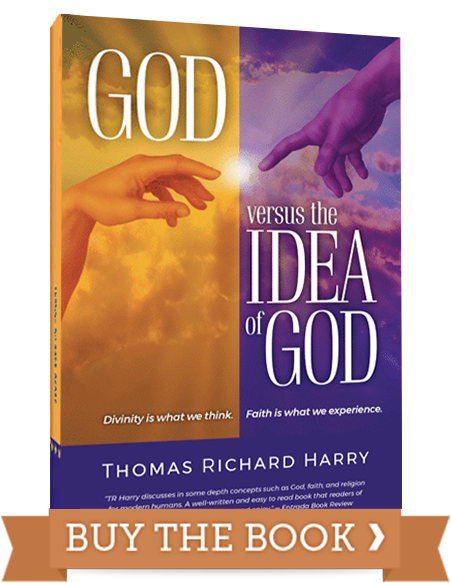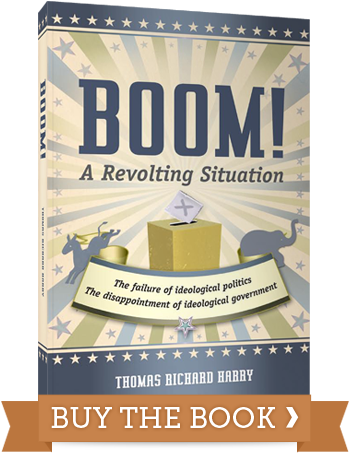The American Family Gazette
Volume I, 0911
True or false: Political centrists are a real species. Political bipartisanship is a real possibility. Political Independents are a myth.
If you answered true, true, and true it suggests (a) you’re a pretty average voter, (b) the present political structure’s propaganda is pretty effective, and (c) you haven’t been paying close attention lately. Let’s take a brief but questioning look at these three beliefs.
First, what (supposedly) is a centrist? Well, the thinking goes, he/she isn’t a conservative, isn’t a liberal, but somewhere in between; in “the middle of the road.” The late Senator from Texas, John Hightower, was fond of saying the only things you find in the middle of the road are yellow lines and dead armadillos! That pretty well says it all for this concept. In our political system, we don’t elect “centrists”, we elect Democrats or Republicans. Now, these Democrats or Republicans might be considered “moderate” in their ideological views, but that doesn’t make them centrists. It just makes them moderate conservatives or moderate liberals, that’s all. Today one frequently hears that moderates are a dying, if not dead, breed of politician. Translation: The political parties have no room for them . Still, there are politicians wanting to be considered a centrist in the eyes of voters. Why, if we don’t elect “centrists.”
In spite of the fact that the choice “centrist” isn’t on the ballot, the reasons are exactly all about elections. While we might like to believe we can elect centrists, centrism is primarily a concept employed for campaign purposes. Someone has said, “The appearance of being a centrist is the most pragmatic way to gain and hold on to power by appealing to as many different groups as possible without necessarily believing in any particular principle espoused by each group.” I believe that’s largely the case: Consider the example in a recent (10/17/09) edition of The Economist: “. . . it was all . . . to make it sound to centrist [preferring] voters that he could be trusted with America’s security even as he milked the anti-Iraq war types for every vote and dollar he could get. Some anti-war types feel the same way.” Or another from a (NYRB) book review on the Clinton presidency: “ . . . and remote from the centrist spirit in which Clinton had run his campaign.” I suggest those who said “true” here reconsider the basis for their opinions.
The principal that opposites attract is foreign to our ideological political system. It simply doesn’t apply. Translation: Bipartisanship simply on the basis of an approach being acceptable to both sides just isn’t possible, by definition. Well, how about by compromise? Isn’t that bipartisanship? No, that’s compromise, and compromise is usually the result of power; of reward or punishment.
There are rare exceptions to this general rule. Unity in the face of a clear enemy threat or some disaster is probably the most common. Unity is also possible on the concept that something needs to be done, or some issue confronted, but at that agreement, bipartisanship ends. Each side will favor its preferred method of dealing with such issue or event. At the core, political ideology is as fundamental as religion. It represents held values and beliefs, and one does not normally or voluntarily compromise such. If something is presented as bipartisan, mild skepticism is too polite a doubting. That would at best indicate a “moderate approach” to resolving a political problem, and we have already highlighted the scarcity of such politicians today. Again, there may be compromise, but that’s not indicative of bipartisanship. It is simply power politics. Give and take to arrive at “bipartisanship” is in the sense of how much do I have to give, how much I can take and get what I want. When the basis for political decisions is ideological as opposed to utilitarian, that’s the most that can be expected. So, the correct answer regarding bipartisanship is, “false.”
So, what about political Independents? The short answer is that they are not by any stretch of the imagination a myth. This reality is supported by the fact that—throughout America— in our political arena today we clearly see four categories of registered voters, by size: Independents, Democrats, Republicans and everyone else. Today, both major parties acknowledge that they need “the independent vote” to win elections. And yet, aside from registration statistics and polls, Independents are invisible as a political phenomenon. And this is how the major parties want them to remain.
Neither party wants Independents to develop—potentially or otherwise— into a political “bloc.” They do as much possible to play-down this possibility. Why not? That would mean potential competition at the polls. So they refer to them as “the swing vote.” To the parties, this means these are “uncommitted voters” to be wooed and sought after come election times—but not otherwise. Once elections are over, their response is, okay, put them back in the closet until we need them next time. Once elected, Independents form no part of any implied electoral coalition. They have no seat at the table. They have no voice. They cease to matter. They continue politically invisible, electorally used and abused.
What does being an Independent signify for those so registering? No one has seriously asked them. (What they are asked is do they feel closer to one party or another, which of course serves the major parties’ agendas). There are no doubt several answers, but among those, one may be compelling: It signifies that many voters reject not necessarily the basic ideology of either party—Independents for the most part are every-day conservatives or liberals, like the preponderance of average Americans— but the results of government they see from whichever of these two wins elections. They, consciously or unconsciously, are rejecting outcome. They are not happy with the results of government; they are not happy with the political battles that consume both the time and energy of government; they are not satisfied with the direction they see these parties leading, if leading is the right term, the country. Independents, again either consciously or otherwise, want change; real change, not just the rhetoric of change. Both parties disappoint.
The so called myth of Independents is shattered by their documented existence. But the myth gets credence from a political arena that has not made room for them in the political process–nor have Independents yet coalesced to a point of demanding it. We have a two-party system, and it can serve us well. At present the Parties themselves apparently don’t and hence the growth of Independents in protest of this fact. But still, we have only two practical choices at the polls. So, come election time, what are the options for Independents who wish to see their vote count for something: Democrat or Republican. Hence the “myth” that all Independents are really “closet” Democrats or Republicans. For Independents this is a least-worse-option. The choice between something you don’t like and something you don’t like isn’t a very good choice, but that’s what Independents face, and hence the huge effort made by the Parties to woo these reluctant voters who face such a conundrum; a political catch-22.
In a nutshell, political Independents represent the fact that in our political marketplace today, the supply of political alternatives doesn’t well suit the demand for political alternatives. But a cooperating duopoly that sets the rules isn’t likely to voluntarily change them to its own detriment. Scattered efforts are underway to try and correct this situation, such as open primary rules, but don’t expect too much from any significant progress in this direction. It won’t mean much even if such restrictive rules are liberalized if there is no viable and clearly differentiated political option available for Independents and others to even consider. Should this be the case, then “true” or “false”, Independents might just as well be the myth today hypothesized.
T R Harry
11/09






